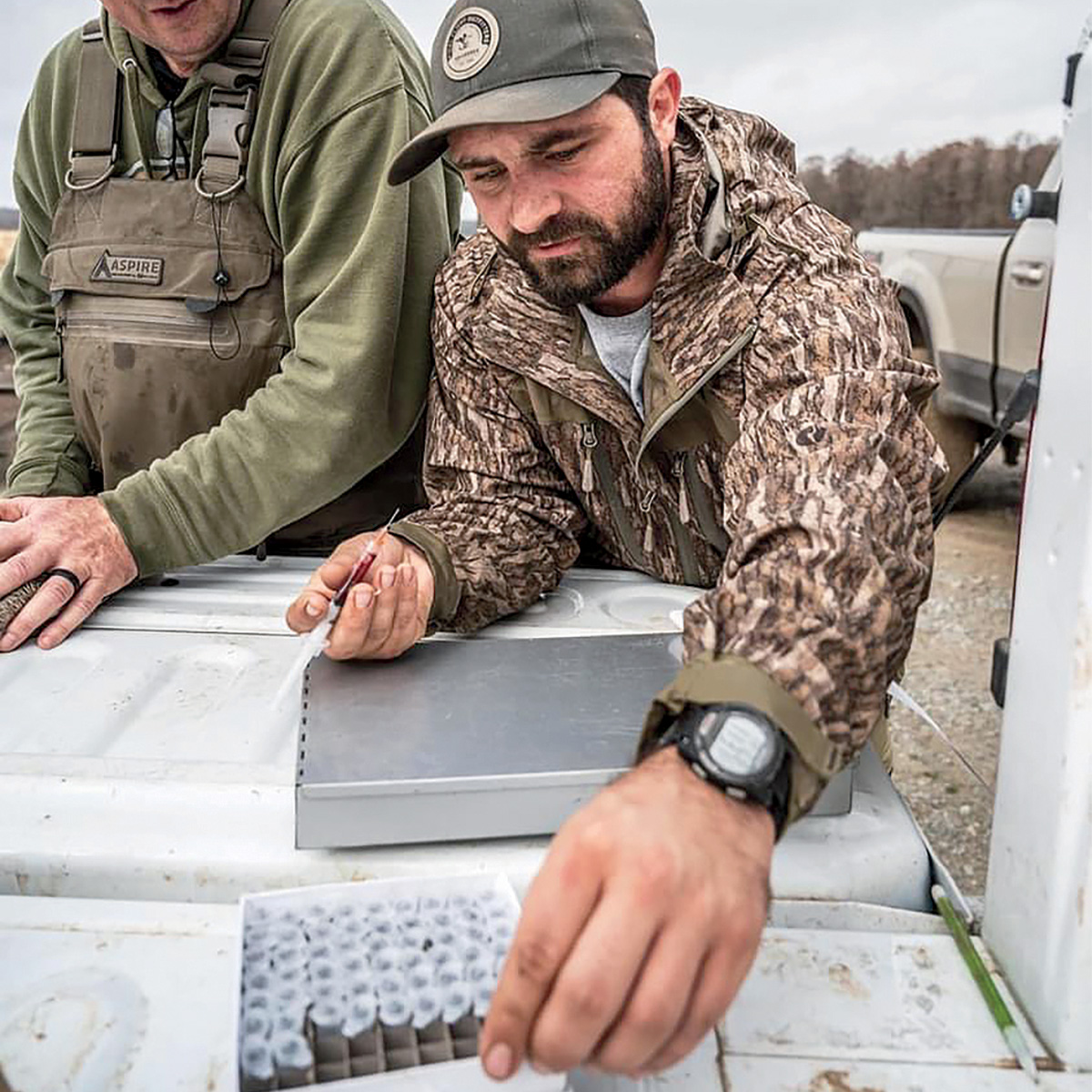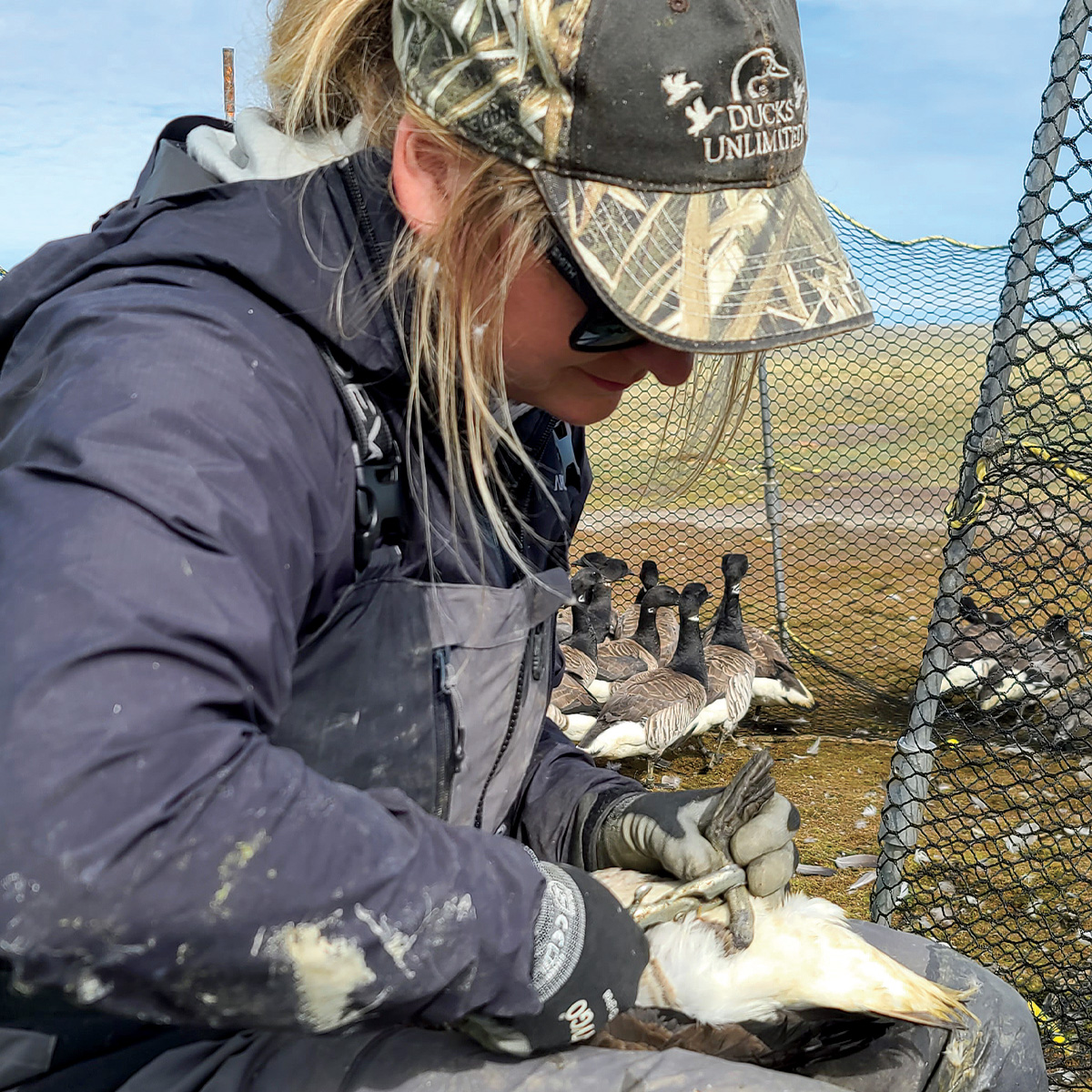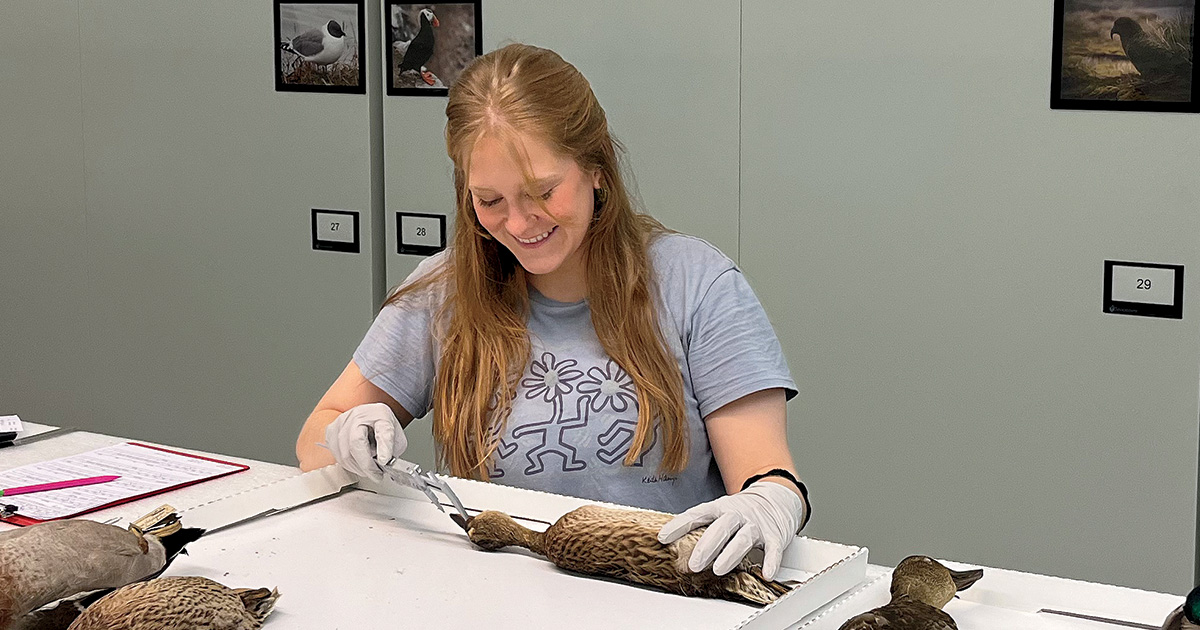Conservation: Investing in the Future
Students advance waterfowl science and receive hands-on training for future conservation careers
Students advance waterfowl science and receive hands-on training for future conservation careers
By Nathan Ratchford

Nick Masto’s research is exploring the different variables that affect movements of wintering mallards in the Mississippi Alluvial Valley. The findings will help DU and its partners plan future conservation work.
As conservationists, we invest not only in today, but also in a better tomorrow. That is central to Ducks Unlimited’s mission, and we pay it forward in a variety of ways, including through habitat conservation, cooperation with agricultural producers, public policy, and more. One of the most impactful, yet little-known ways that DU invests in the future is by sponsoring graduate-level research at leading universities across North America.
DU established its fellowship program in 1991 as a collaboration between its science teams in the United States and Canada. Fellowships awarded through this program are highly prestigious, and only a few graduate students are selected for the program each year. Fellowship winners typically submit research proposals that are cutting edge, address key scientific uncertainties, and enhance our collective understanding of wetland and waterfowl ecology and conservation.
“The research supported through DU’s fellowship program has real-world scientific value, but we are also working with and training the next generation of conservation professionals,” says Dr. Lauren Bortolotti, a research scientist with DU Canada who manages the fellowship program. “Past fellowship winners are now working for government agencies and managing waterfowl and their habitats, they are professors in waterfowl and conservation science, and some have become DU employees.”
Bortolotti would know—she is a past DU fellowship winner herself. To date, DU has awarded fellowships to more than 65 students at 26 universities. Following are profiles of three recent DU fellowship winners and highlights of their ongoing research.
Nick Masto’s fascination with waterfowl began while he was growing up in his home state of South Carolina. He recently completed his doctoral degree in wildlife biology at Tennessee Technological University under the advisement of Dr. Bradley Cohen. Masto was selected for a DU fellowship for his research on mallard distribution, habitat selection, and related behaviors in the Mississippi Alluvial Valley. Specifically, Masto’s research aims to learn how landscape energetics, hunting pressure, and wetland availability influence mallard movements in this important wintering area. Landscape energetics, in simpler terms, is the amount and quality of habitat that is available to waterfowl in a certain area.
Masto and his team captured and marked mallards with GPS tracking devices, which allowed them to closely monitor the birds’ behavior and movements. By tracking the mallards’ hourly locations, the researchers were able to determine whether the birds were flying, feeding, or resting and then compare those observations with hunting activity, which was indexed by observation from an airplane. Habitat availability and quality were evaluated during fieldwork.
Masto is the first researcher to integrate real-time estimates of habitat abundance, quality, and hunting pressure while concurrently monitoring mallards marked with telemetry devices. When asked about the impact the DU fellowship has had on his work, Masto says: “It has been life-changing, both personally and professionally. The fellowship and collaborations with Dr. Mike Brasher at DU and my advisor have led to a new position at Cornell, where we will be integrating eBird data with traditional midwinter waterfowl surveys and other sources to better understand waterfowl movements and timing of migrations up and down the flyways. This work will help inform conservation partners of where and when habitat is needed annually.”

Lindsay Carlson is researching the effects of habitat changes on brant that stage on James Bay and other areas where important food resources have been declining.
Lindsay Carlson grew up in Montana, where she fell in love with all things wild. She was selected for a DU fellowship for her doctoral research on the effects of habitat quality on the productivity of Atlantic brant. Nearly all Atlantic brant stage on James Bay in Ontario and Quebec, where a significant decline in eelgrass—a key food source for brant—has been linked to climate change and hydroelectric development.
“We were interested in seeing how this decline has impacted brant,” Carlson says. “We want to understand how quality and availability of eelgrass and other vegetation in these staging areas affect brant behavior and habitat use, and eventually see how those impacts might affect reproductive success.”
Carlson and her colleagues are analyzing brant telemetry data to determine breeding success for individual birds in relation to habitat quality and conditions on James Bay as well as other key migration and wintering areas. Because of their dependence on native vegetation rather than agricultural foods, Atlantic brant are disproportionately affected by habitat loss and land-use changes. Adult survival in brant appears to be relatively stable, but reproductive success is variable. If a link can be found between habitat quality and reproductive success, that could have important implications for brant management and conservation.
Carlson is working closely with other researchers and interested parties, including the indigenous Cree people of James Bay and researchers in New York and New Jersey. “Thanks to the DU fellowship program and its funding, we have been able to expand the project’s reach to the western side of James Bay, where most of the brant we’ve tagged are staging. We were also able to hire a summer technician to collect vegetation samples on western James Bay to better understand the habitat and foods that brant are using in this region,” Carlson says.

Lauren McFarland is studying the history and potential future implications of domestic mallards breeding with wild mallards and other ducks.
Lauren McFarland was studying wild turkeys, woodcock, and other wild birds as an undergraduate student at Louisiana State University when she heard about DU’s local Tiger chapter. After getting involved with the chapter on campus, she was introduced to duck hunting, which motivated her to switch the focus of her studies to waterfowl. Later, she selected her research topic after listening to a fascinating conversation on the DU Podcast about waterfowl genetic research with guest Dr. Philip Lavretsky, who would later become her academic advisor.
McFarland received a DU fellowship for her doctoral research on the hybridization of wild mallards with game farm mallards, including studies of historical and possible future effects of this hybridization on wild mallard populations. To conduct this research, McFarland has gathered tissue and other samples from 700 museum specimens, with the oldest dating back to the 1800s.
The increasing prevalence of genetic variation derived from domestic mallards in wild mallard populations is a major conservation concern, particularly for the Atlantic mallard population, which shows the greatest prevalence of hybridization with domestic birds. “Domestic traits aren’t going to fare well in the wild, and as these populations continue to spread, we may see more declines in wild mallard populations,” McFarland says. “Given that mallards are such aggressive breeders, there is also a concern that these traits may start to be seen in other species as well.”
DU has been a source of inspiration and support throughout McFarland’s academic career, but the DU fellowship has been truly transformative. “The critical funding has given me time to focus on my research and travel widely to sample these specimens. Gathering genetic data is not cheap. DU has opened up so many doors for me to collaborate with others. We are working now with Dr. Lavretsky, my primary advisor, on DU’s new duck DNA program, which is super exciting.”